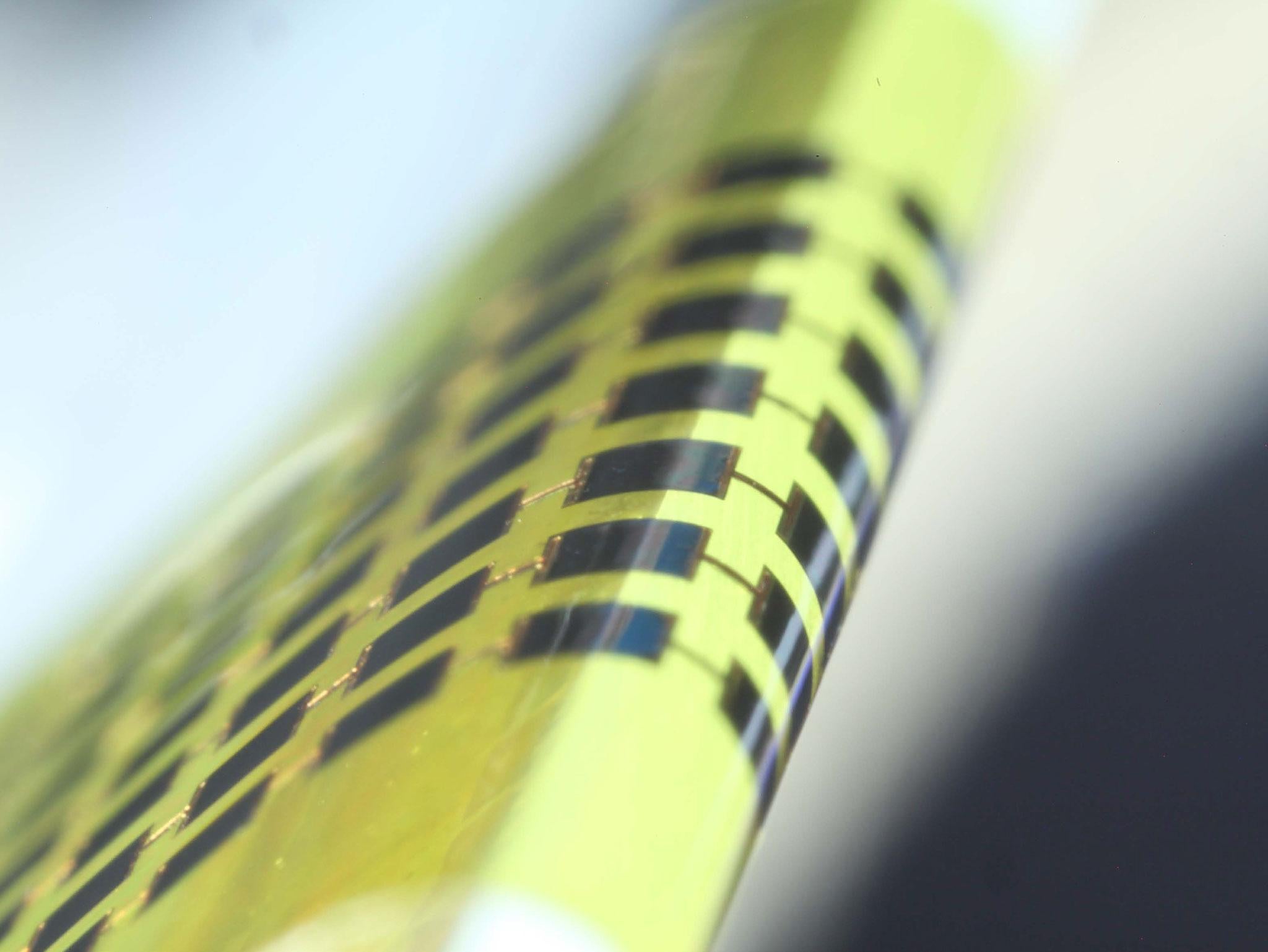Solar panels 100 times thinner than a human hair could power wearable technology revolution
The new photovoltaic cells can be wrapped around something just 1.4mm across

Solar panels so flexible and thin that they can be wrapped around the frame of a pair of glasses have been developed by scientists in a potential breakthrough for wearable electronics.
The panels, developed by a team of researchers in South Korea, are just a single micrometre across – much thinner than the average human hair or a coat of paint, which are both typically about 100 micrometres.
These are hundreds of times thinner than standard solar panels and three to four times thinner than most of the slimmest solar cells currently available.
Professor Jongho Lee, an engineer at the Gwangju Institute of Science and Technology, said that their panels were “less fragile under bending, but perform similarly or even slightly better” to panels 3.5 micrometres across.
The researchers said the new material was easily flexible enough to wrap around a pencil. And in tests they found it would still work when wrapped around something just 1.4mm wide.
It is thought the panels could be used to provide power for smart glasses or incorporated into clothing to power wearable technology, which is often limited by the size and weight of the battery.
The scientists, who published their findings in the journal Applied Physics Letters, wrote that they had made the ultra-thin solar cells using a semiconductor, gallium arsenide.
They were then stamped on to a flexible material, avoiding the need for an adhesive that would add to its thickness. The cells were “cold-welded” to an electrode.
While some other researchers have made solar panels of around one micrometre thick before, they did so using a different technique, called etching.
Professor Lee’s team believes that their method of transfer printing could enable highly flexible photovoltaic cells to be made with a smaller amount of materials.
Join our commenting forum
Join thought-provoking conversations, follow other Independent readers and see their replies
Comments
Bookmark popover
Removed from bookmarks